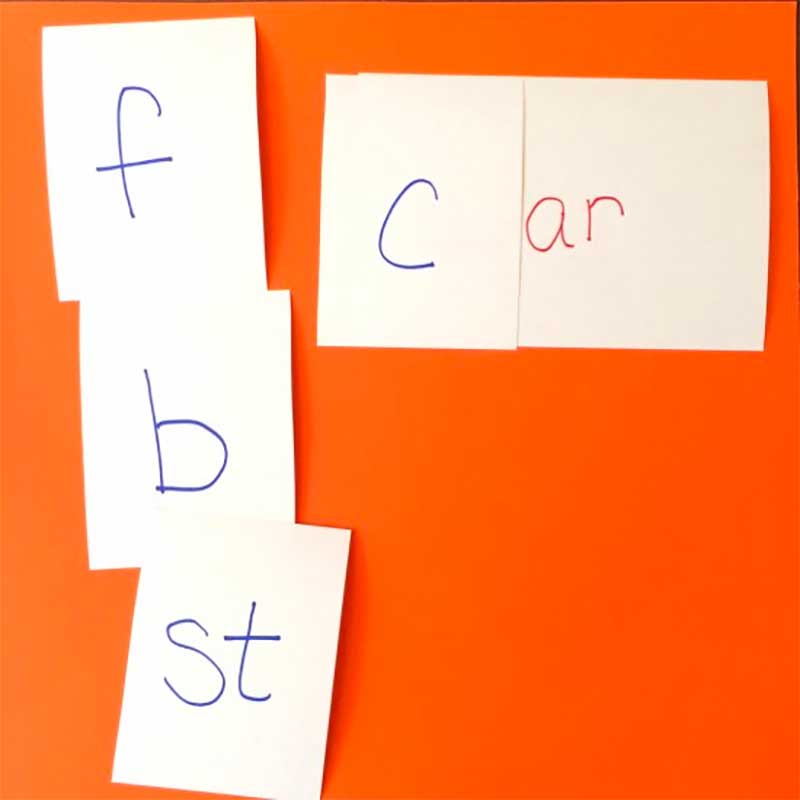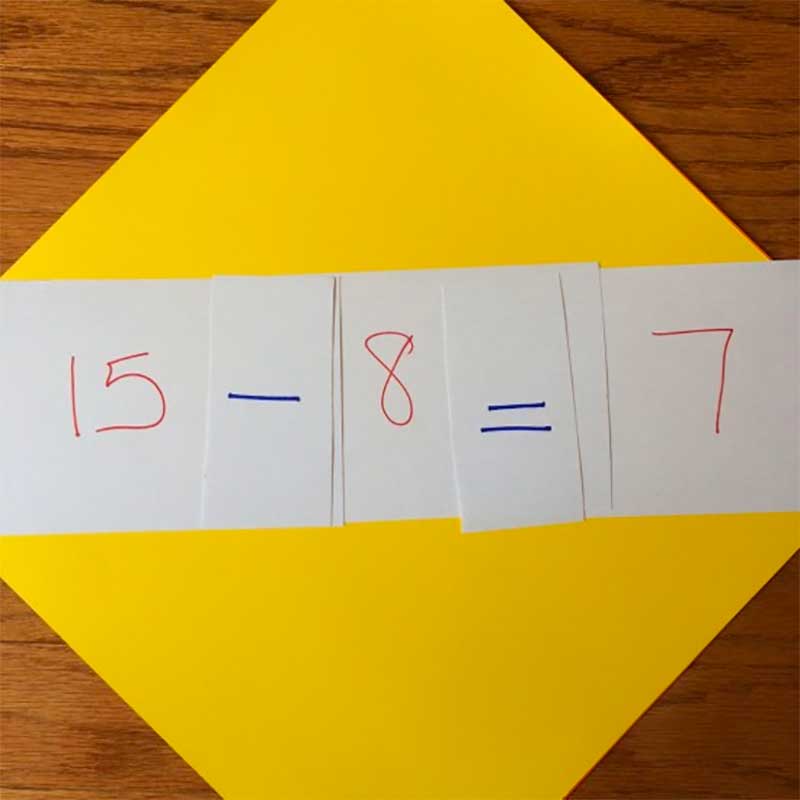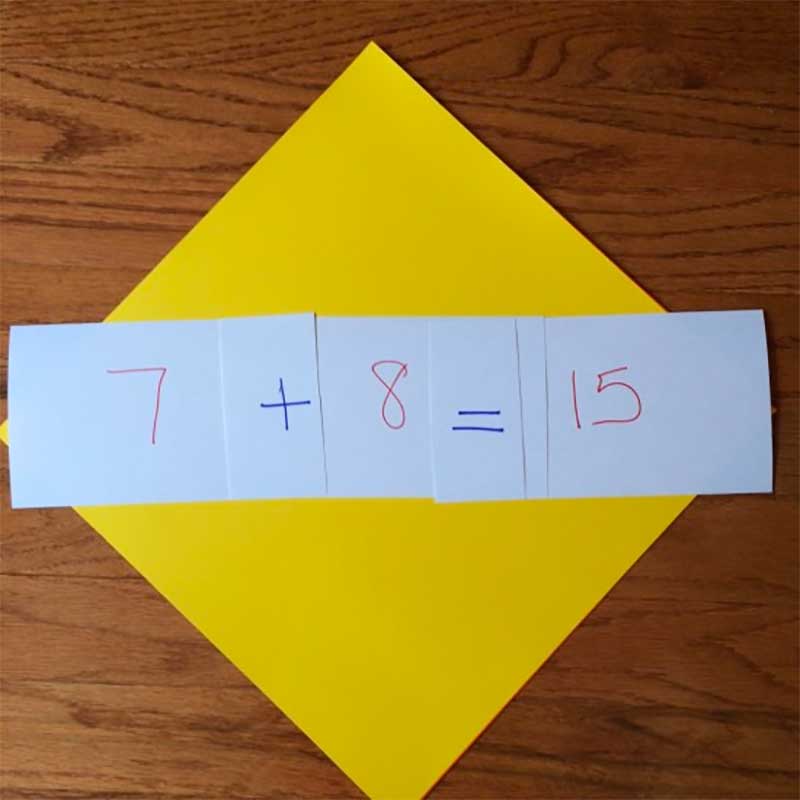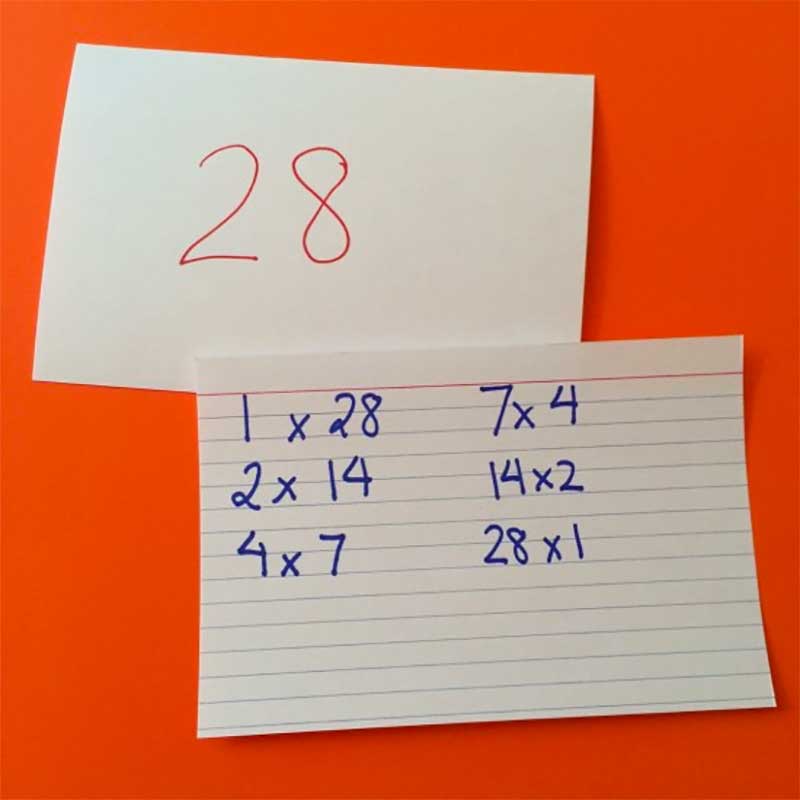From homework to spelling activities to games, there are so many ways to use notecards (3×5, 4×6, 5×7, or other sizes) to help your children learn and help them with homework. I always keep them on hand–in fact, they’re hidden in drawers in most rooms in our home. Here are some ways to use note cards to help your children with homework.
Using note cards to supplement learning
3×5 cards are the easiest way to reinforce a spelling word, a word pattern, or a math problem. When my kids are having trouble with a series of math facts or need to see an alternate way to do them, we grab a 3×5 card. Because these cards are disposable and not connected directly to the assignment sheet, the cards give a feeling of safety to the kids.
They don’t have to work out their troubles on “official” school papers, and Mom’s handwriting can appear on them as she explains (my kids don’t like my handwriting on their own homework.)
While they know that a 3×5 card is usually disposable as scrap paper, if I see a need to hang onto it as a reminder of a problem for later (perhaps I want to bring it to conferences with the teacher to explain where my son or daughter was having trouble or I want to approach the type of problem again with them later), a 3×5 notecard is sturdier than scrap and will hold up better. Plus, I can file it away neatly in a file box of “areas [or cards] of concern.”
Word Patterns (Phonics)

As children learn to read, they often learn best with word patterns. I can quickly grab a card and write a pattern word on it to help my kids recognize the patterns. I try to hold on to these cards to remind the kids of where the words belong. (For example, I may have an -ar card which lists far and car. When a child comes to the word bar, we can add the word to the card as a reminder.)

For another basics phonics game, create ending sounds cards in one color, beginning sounds cards in a second color (and for more advanced readers, middle sounds in a third color.) Children will move the cards to create new words by creating a rainbow of colors. (Looking for sounds? This list at Worksheet Genius is a huge help!)
Basic Reading Skills: Games To Expand A Child’s Phonological Awareness
Flash Card Drills
Of course, 3×5 cards have been used for decades as flashcards for drilling math, spelling, and school-related concepts, and still can be. But it becomes more exciting when you use the cards to create games.
Math Fact Families

Fact families are a strong part of the foundation of math education. By creating a few sets of numbers as well as +, -, and = cards, the kids can reinforce fact families by manipulating the cards in a game. In this example, the numbers 7, 8, and 15 are a family. The kids create number sentences by moving the cards around.

We also create Multiples cards, as shown here, to help kids see multiplication patterns.

Math Games
My son’s teacher shared the idea of playing multiplication war. The kids will first create flashcards with math facts, then divide the piles in half and play “war” with cards. Rather than comparing the two numbers on the card, they’ll compare the product. (Works for addition, subtraction, and division, as well.)
Learning With M&Ms: Learning Across The Curriculum And Beyond
Another easy game to adapt is memory. Place the math fact cards upside down on the floor in an array. Have children turn them over two at a time, matching the products (or sums, or differences.) When you find a match, remove the cards. If you turned over cards answers don’t match, turn them over again in the same spot and let another person have a card. This game will take a bit of planning to make sure each fact has a partner.
Identify and/or Write Main Idea and Supporting Details
Using cards allows children the ability to see what they’re reading more clearly. If your child needs to identify the main idea and supporting details of a story or non-fiction piece, guide him to write a supporting detail on each card.
Once they’re on separate cards, it takes the concept apart, making it easier to identify what the main idea is or what all the cards have in common. (A simple example: After reading Mr. Nussbaum’s paragraph about Mars, the child should write a different detail from the paragraph, each on its own card.
Now that the details are separate, it’s easier to determine the main idea of this paragraph is a description of what Mars looks like.) Have the kids hold onto the cards through the unit for further study aids in case there will be a test to study for, or they’ll need to write their own paragraph or create an activity with the facts.
Online Games And Apps To Enhance Your Child’s Learning
This is also a great technique to use when your child is writing either a summary or an essay. By first identifying his supporting details on cards which can be moved around, he’s better able to place them in an appropriate order to add sub-details later.
Again, often kids can more easily write the main idea when the details are separated into separate cards. Once all the cards and thoughts are in order, kids can begin writing a rough draft that’s clearly laid out.
Starting this concept early will help students later as they begin to write larger research papers and reports.
Oral Presentations
Recently, my son had to make a presentation for his classmates. While he had all of the information in his head, his hands were distracting (he didn’t know what to do with them), and little distractions and interruptions made him lose his train of thought. Even though he didn’t need to hold cards to read his summary to the class, I placed blank cards in his hands. Holding them kept him still more calm. Eventually, he wrote a few words on each card just in case he needed them.









